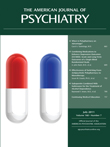This is a timely, comprehensive, and relevant book detailing the role of gamma-aminobutyric acid (GABA) in the regulation of sleep—timely in that disorders of sleep have been increasingly recognized as major issues in health maintenance, human performance at many levels, and psychiatric well-being. Additionally, for the first time, we have sleep medications available that, compared with those of the past, are effective, safe, and compatible with longer-term use. These medications are thought to work primarily through their effect on the GABA inhibitory system. A basic knowledge of this system is highly useful to those who are involved in sleep-related research or who practice in sleep medicine, especially regarding insomnia.
This volume is divided into three broad topical areas. The first four chapters, Part I, focus on basic sleep physiology and pharmacology. The next 10 chapters deal with a general area titled Sleep Science and Circuitry, and the final five chapters, Part III (titled Hypnotics), encompass several clinical sections as well as provide discussion of newer hypnotic agents.
Möhler's introductory chapter provides a nice review of the structure of several GABA receptors and their putative function in a number of domains, including sleep and arousal, cognition, anxiety, and pain. Relevant animal experiments are reviewed, suggesting areas that will likely be of future clinical interest in the modulation of these activities.
Atack reviews the increasing knowledge of GABA receptor subtypes and their agonists and antagonists, including a number of pharmacological agents that modulate specific subtypes that have been studied for their potential hypnotic and anxiolytic properties. There is an interesting and informational section describing many compounds that have been studied for their potential clinical utility but not followed up or that have been discarded for various reasons. Clinicians may have heard of some of these agents, and this section discusses why they were never available on the market.
Waldvogel et al. focus on GABAA receptor subunit distribution in the human brain, and the chapter by Greenblatt contains an interesting review of the use of GABA active hypnotics in clinical settings, including evidence that “common knowledge” about some drugs is often actually opinion based on little data and not supported by careful reading of the literature. The basic pharmacology involved in predicting hypnotic effects is presented in considerable detail for interested readers. The reader can come away with a good understanding of why some drugs behave as they do in terms of onset and duration of action and residual next-day effects.
The chapter by Lawrence on emerging knowledge of subtypes of interneuronal systems and their relationship to GABAergic mechanisms provides a background for the increasing interest in systems controlling variations in neuronal oscillatory patterns as they relate to wake and sleep mechanisms.
Gottesmann provides a review of emerging evidence of the important role of GABAB and GABAC receptors in wake-sleep regulation and includes intriguing early data on the role of hypocretin/orexin neuronal function in sleep-wake state control, an area of likely future importance in the clinical management of sleep disorders.
Monte emphasizes awake/REM state control, and the next five chapters call attention to the neurophysiology and neurochemistry of REM sleep predominantly. Attention devoted to slow-wave sleep is sparse, which is unfortunate considering the increasing evidence that slow-wave sleep, especially delta sleep, may be central to restoration and maintenance of proper brain function. The last two chapters of Part II are devoted to circadian aspects of sleep as modulated by GABA mechanisms, including possible GABA/melatonin interactions.
Part III begins with several chapters on more clinically related issues. Wetter et al. provide an in-depth discussion of the pathophysiology of insomnia and hypersomnia (narcolepsy) as well as a nice review of restless legs syndrome and periodic limb movement syndrome. Pagel and Kram discuss the differential diagnosis and treatment of insomnia. The final four chapters of Part III review the more recent nonbenzodiazepine alpha-1 (omega-1) receptor agonists zolpidem, eszopiclone, indiplon, and zaleplon.
While we have come a long way in terms of the development and utilization of safer and effective GABA-related hypnotic agents, the gap between the rather extensive basic science database reviewed in this volume and the clinic remains large. This text, however, is an excellent assessment of the basic science relating to GABA and sleep to date.

